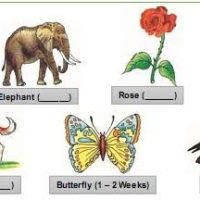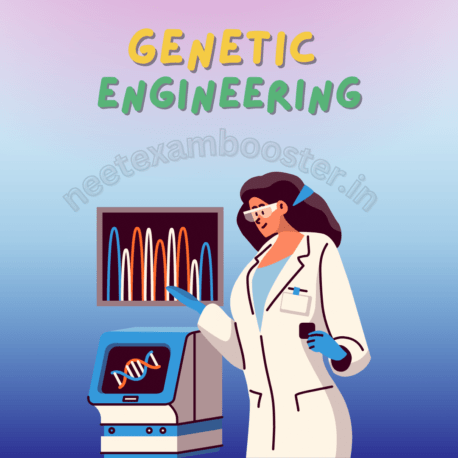Sexual Reproduction In Flowering Plants Important questions for NEET exam preparation. Questions are totally based of NCERT and Precious year asked questions.
Answer Keys of this Sexual Reproduction In Flowering Plants Important questions are also given at the bottom of this page.
Sexual Reproduction In Flowering Plants is associated with Biology Class 12 and Chapter 3.

Hope this questions will help you in your NEET exam preparation.
Let’s start solving and ALL THE BEST.
Sexual Reproduction In Flowering Plants Important questions
1) The longest period over which the life of any organism or species may extend, according to the available biological knowledge concerning it, is known as?
a) Life span b) Life expectancy
c) Life cycle d) All of these
2) Find out the incorrect statement?
a) Life spans of organisms is correlated with their size
b) Reproduction maintains the continuity of life
c) No natural death in unicelled organisms because they get divide before death
d) All of these
3) Which pair is correct?
a) Zoospore :: Sponges
b) Gemmules :: Hydra
c) Conidia :: Penicillium
d) Buds :: Chlamydomonas
4) Which is microscopic motile structure?
a) Gemmules b) Conidia
c) Zoospores d) All of these
5) Identify unicelled organism multiply by unequal division which results in a small lateral outgrowth in initial phase (before its separation)?
a) Amoeba b) Paramecium
c) Chlamydomonas d) Yeast
6) Runner, Sucker, Offset & bulb are?
a) Vegetative propagules
b) Result of sexual reproduction
c) Does not involve two parents
d) Both a & c
7) Which plant is known as “Terror of Bengal”?
a) Water lily b) Potomogeton
c) Nymphaea d) Eichhornia
8) Species of Neelakuranji is?
a) Cressipes b) Strobilanthus
c) kunthiana d) Eichhornia
9) Which of the following form isogametes during sexual reproduction?
a) Fucus b) Human beings
c) Cladophora d) None of these
10) If we called one gamete as antherozoid & another as ovum, it means?
a) Isogamy b) Anisogamy
c) Oogamy d) Hermaphrodite
11) Identify Bisexual Animals ?
a) Earthworms b) Sponges
c) Tapeworm d) All of these
12) Clitellum is present in?
a) Cockroach b) Tapeworm
c) Sponges d) Earthworm
13) Which of the following having maximum 2n chromosome number?
a) Humans b) Butterfly
c) Fruit fly d) Cat
14) Ophioglossum is having chromosomes 2n = 1260, it is a ?
a) Gymnosperm b) Angiosperm
c) Bryophyta d) Pteridophyta
15) What is unique in marchantia?
a) Bisexual flower b) Monocious plant
c) Self sterility d) Diocious plant
16) In Seed plants which is considered as the carrier of male gametes?
a) Water b) Anther
c) Pollen grains d) Stamen
17) The most vital event of sexual reproduction is perhaps?
a) Parthenogenesis b) Embryogenesis
c) Gamete formation d) Syngamy
18) If there are 1680 microspores in an anther, how many microspore mother cells will be there in its each pollen chamber?
a) 105 b) 210
c) 420 d) 840
19) The function of innermost layer of pollen sac, tapetum is?
a) Dehiscene b) Mechanical
c) Protective d) Nutritive
20) What is the function of germ pore?
a) Emergence of radicle
b) Absorption of water for seed germination
c) Initiation of pollen tube
d) Release of male gametes

21) Development and formation of pollen grains in anther of the stamen is known as?
a) Pollination
b) Fertilization
c) Microsporogenesis
d) Megasporogenesis
22) A flower is zygomorphic when?
a) Any transverse section divides it into two equal halves
b) Only one transverse section divides it into two equal halves
c) Every vertical section passing through its centre divides it into two equal halves
d) Only one vertical section passing through its centre divides it into two equal halves
23) Half inferior ovary present in?
a) Hypogynous flower b) Epigynous flower
c) Both of these d) None of these
24) In Ray florets of Sunflower, the ovary is?
a) Superior b) Inferior
c) Half – inferior d) absent
25) In Canna the flower shows?
a) Actinomorphic symmetry
b) Zygomorphic Symmetry
c) Radial Symmetry
d) Asymmetry
26) Syncarpous ovary present in?
a) Lotus b) Rose
c) Mustard d) All of these
27) Which type of placentation seen in the ovary of Pea?
a) Marginal b) Axile
c) Parietal d) Basal
28) Axile placentation seen in?
a) China rose, Tomato, Lemon
b) China rose, Argemone, Mustard
c) Pea, Primrose, Sunflower
d) Marigold, Sunflower, Lemon
29) In Sunflower the placentation is ?
a) Marginal b) Axile
c) Parietal d) Basal
30) Thalamus is?
a) Base of flower
b) Base of ovary
c) Modification of pollen
d) Modification of petal
31) Flower is complete when it has?
a) Calyx, corolla, androecium and gynoecium
b) Calyx and corolla
c) Androecium and gynoecium
d) Corolla, androecium and gynoecium
32) Stamens attached to petals are?
a) Antipetalous b) Epipetalous
c) Epiphyllous d) Episepalous
33) Beauty of Bougainvillea flower is due to?
a) Corolla b) Calyx
c) Bracts d) Androecium
34) Flower is complete when it has?
a) Calyx, corolla, androecium and gynoecium
b) Calyx and corolla
c) Androecium and gynoecium
d) Corolla, androecium and gynoecium
35) Keel is the characteristic feature of flower of?
a) Indigofera b) Aloe
c) Tomato d) Tulip
36) In monoadelphous condition, stamens have?
a) Filaments of all united in one group but anthers are free
b) Filaments united in groups but all anthers are free
c) Anthers are fused but filaments are free d) Both anthers and filamens are fused
37) Stamens attached to petals are?
a) Antipetalous b) Epipetalous
c) Epiphyllous d) Episepalous
38) Axis developing between androecium and gynoecium is?
a) Anthophore b) Androphore
c) Gynophore d) Gynandrophore
39) The expression “Gynoecium is apocarpous” implies that the?
a) Gynoecium comprises only one pistil which is fused with the stamen
b) Gynoecium comprises more than one carpel, all of which are free
c) Gynoecium comprises only one carpel which is free
d) Gynoecium comprises more than one carpel which are fused
40) Perigynous flowers are found in?
a) Cucumber b) China rose
c) Rose d) Guava
41) Sometimes sepals are modified into hairy structures which are useful in dispersal of seeds.
These are called?
a) Tepals b) Epik
c) Pappus d) Trichome
42) Pappus is modification of?
a) Bracts b) Bracteoles
c) Corolla d) Caylx
42) Pappus is modification of?
a) Bracts b) Bracteoles
c) Corolla d) Caylx
Sexual Reproduction In Flowering Important Questions Answer Keys with NCERT page number.
1) D. Page no.4 XII NCERT – the Longest period over which the life of any organism or species may extend, according to the available biological knowledge concerning it or the longevity of an individual. The period from birth to the natural death of an organism represents its life span. Also
known as Life expectancy / Life cycle.
2) A. Page no.4 XII NCERT
3) C. Page no. 6 XII NCERT
4) C. Page no. 6 XII NCERT
5) D. Page no. 6 XII NCERT
6) D. Page no. 7 XII NCERT
7) D. Page no. 8 XII NCERT (Scientific name of Water hyacinth – Eichhornia cressipes)
8) C. Page no. 9 XII NCERT
9) C. Page no. 10 XII NCERT
10) C. Page no. 11 XII NCERT ( Isogametes – Isogamy, Heterogametes – Anisogamy & Oogamy; Oogamy is advanced having Antherozoids/Sperm & Ovum/egg)
11) D. Page no. 11 XII NCE
12) D. Page no. 12 XII NCERT
13) B. Page no. 13 XII NCERT
14) D. Page no. 13 XII NCERT (Fern is pteridophyta)
15) D. Page no. 12 XII NCERT
16) C. Page no. 13 XII NCERT (Pollen grains are male gametophyte)
17) D. page no. 14 XII NCERT
18) A. 105
19) D. Nutritive
20) C. Initiation of pollen tube
21) C. Microsporogenesis
22) D. 11thNCERT Page No. 72
23) D. 11thNCERT Page No. 73 – Perigynous flower
24) B. 11thNCERT Page No. 73
25) D. 11thNCERT Page No. 74
26) C. 11thNCERT Page No. 75
27) A. 11thNCERT Page No. 75
28) A. 11thNCERT Page No. 75
29) D. 11thNCERT Page No. 76
30) A. 11thNCERT Page No. 72
31) A. 11thNCERT Page No. 72 – All four rings or whorls required
32) B. 11thNCERT Page No. 75
33) C. Beauty of Bougainvillea flower is due to petaloid bract (Brightly coloured petal like bract).
34) A. The flower be described as complete if it bears all the floral whorls or floral parts.
35) A. Indigofera (Family – Papilionaceae)
36) A. Monoadelphous: Filaments of all stamens are fused to form a tube around the gynoecium. Anthers are free, e.g., China rose.
37) B. When stamens adnate or unite with petals. This condition is known as epipetalous, e.g., Petunia, Datura.
38) C. It is the third elongated internode between androecium and gynoecium e.g., Capparis and Gynandropsis.
39) B. Gynoecium comprises more than one carpel, all of which are free
40) C. Rose
41) C. Pappus
42) D. In many members of Asteraceae family, the sepals are modified into hairs called pappus, e.g., Tridax.




















